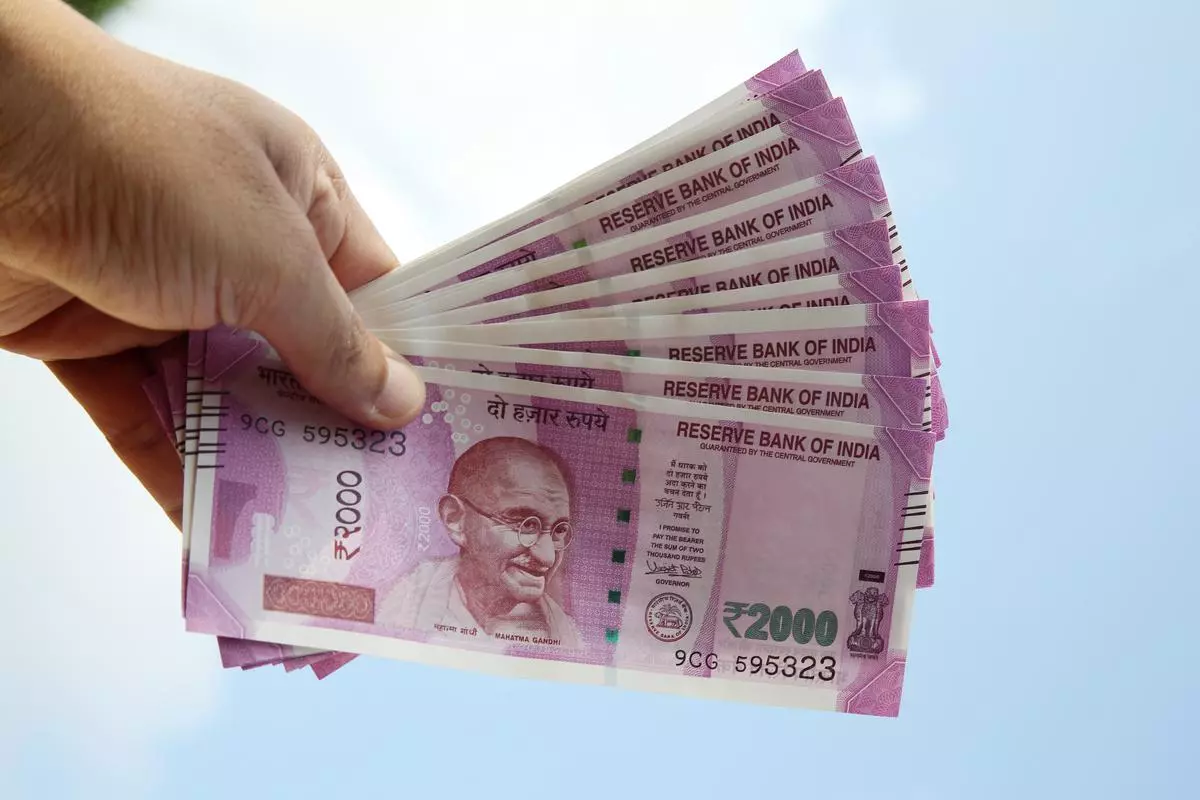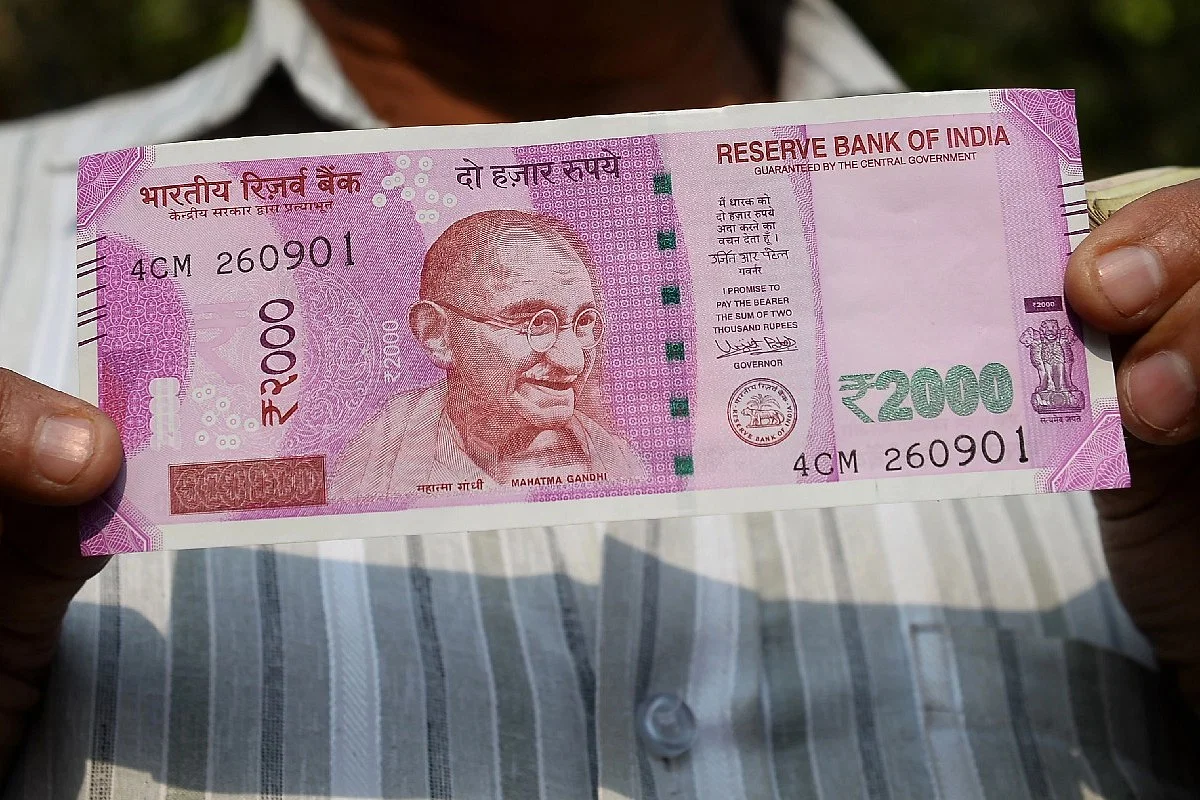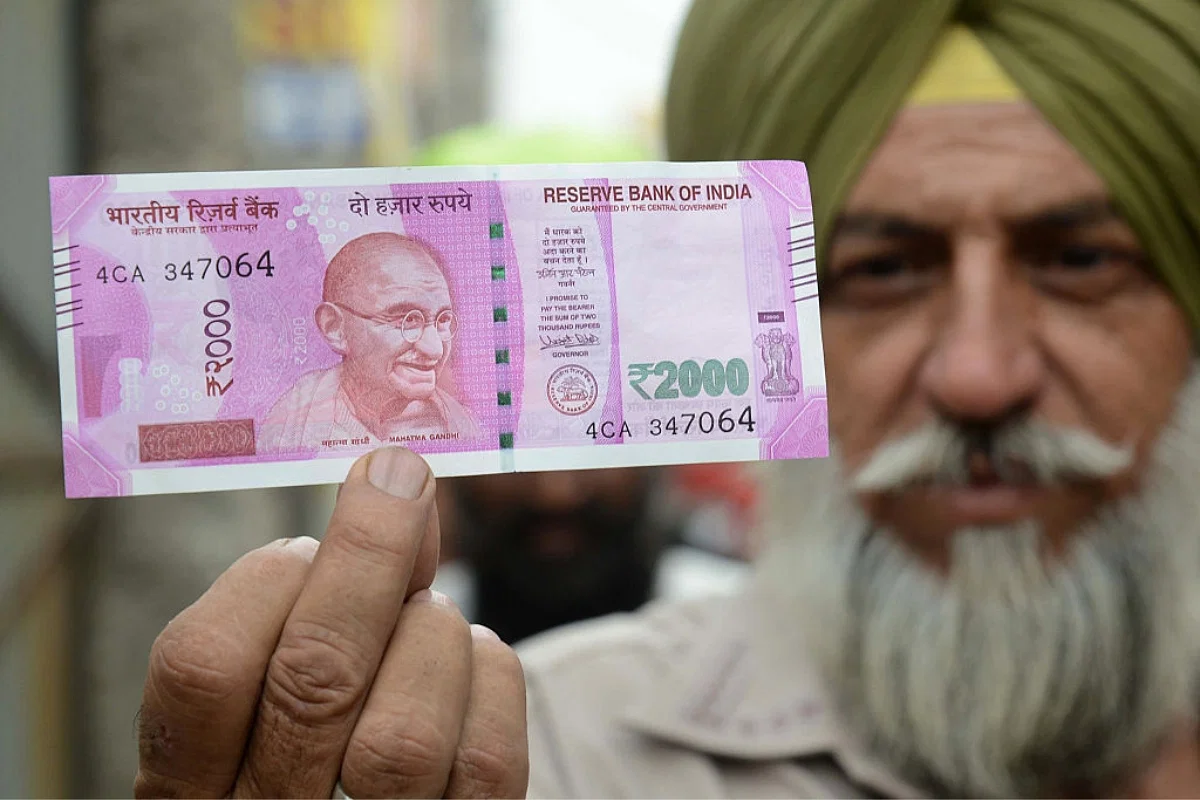Timely Exit of Rs 2,000 Notes
Why did the Reserve Bank of India withdraw Rs 2,000 notes from circulation?

Timely Exit of Rs 2,000 Notes
According to the RBI, about 89 per cent of the Rs 2,000 banknotes were issued before March 2017 and are expected to last 4-5 years. From March 31 to March 31, 2018, the value of these banknotes circulating in the market dropped from Rs 6.73 lakh crore to Rs 3.62 lakh crore, representing only 10.8 per cent of the banknotes in circulation.
The denomination is also not frequently used for transactions. As for other denominations of banknotes, they remain adequate to meet the public’s currency requirements. From May 23 to May 24, 2023, any bank can exchange Rs 2,000 banknotes into banknotes of other denominations up to a limit of Rs 20,000 at a time to ensure operational convenience and avoid disruptions of bank branches’ regular operations.
Additionally, RBI’s 19 regional offices will be equipped to exchange Rs 2,000 banknotes up to a maximum of Rs 20,000 at a time. During 2018-19 (FY19), the printing of Rs 2,000 banknotes was discontinued due to the availability of notes of smaller denominations. For various reasons, it was the right step to take following the demonetization exercise in November 2016.

With the emergence of notes of smaller denominations, the requirement of Rs 2,000 notes was met, and they were no longer printed in 2018-19 (FY19). In November 2016, after demonetization, it was the right step for several reasons. Around 181 crores of Rs 2,000, notes are in circulation. About 10.8 per cent of Indian currency notes amount to Rs 3.62 lakh crore.
The RBI estimates the number of banknotes with a denomination of Rs 2,000 to be 214 crores or 1.6 per cent of the total currency in circulation by the end of March 2022. In March 2022, there were 13,053 crore currency notes in circulation, up from 12,437 crore one year earlier.
In FY19, no Rs 2,000 notes were printed. In March 2020, there were 274 crore rupee notes in circulation. This accounted for 2.4% of the cash in circulation. Last fiscal year, Rs 2,000 notes made up only 1.6% of banknotes in circulation, down to 214 crores. As a percentage of total currency notes, the volume of 2,000 rupee notes has consistently and persistently declined.
Consequently, the Modi government announced the calibrated exit of these notes on March 19, 2023, at a perfect time. The value of the 2,000 denomination notes also dropped from 22.6% to 17.3% at the end of March 2021 and 13.8% at the end of March 2022. By March 2023, the figure dropped even lower to just 10.8%. According to volume, Rs 500 banknotes constituted 34.9 per cent of the total circulation, and Rs 10 banknotes comprised 21.3 per cent.
At the end of March 2021, 500 denomination notes accounted for 31.1 per cent of all notes. In value terms, from March 2020 to March 2022, these notes increased by 73.3 per cent. Compared to March 2021, at the end of March 2022, the total value of currency notes in circulation rose to Rs 31.05 lakh crore.
Banknotes in circulation in March 2022 accounted for eighty-seven per cent of the total value of banknotes compared to 85.7 per cent the previous March. The CIC includes all kinds of banknotes and coins. Money in circulation increased by 9.9% and 5% in 2021-22 (FY22) over 2020-21 (FY21).
By having all the relevant numbers as stated above, we can appreciate why the Modi government decided to extinguish the Rs 2,000 notes in a calibrated manner. All Rs 500 and Rs 1000 notes were declared illegal earlier this year.

A series of Rs 500 notes replaced the old Rs 1000 notes, while the Rs 1000 notes ceased to exist. On May 19, 2023, though, the Rs 2,000 notes continued to be legal tender, so it was not demonetization. The State Bank of India (SBI) clarified that banknote exchanges up to a maximum of Rs 20,000 can be conducted without a requisition slip. Furthermore, while the exchange of notes has a cap of Rs 20,000, the deposit of notes has no such limit.
Advantages Of This Calibrated Exit
The RBA phasing out of Rs 2,000 currency notes would help capture a large part of the Rs 3.62 lakh crore worth of Rs 2,000 currency notes in circulation. The Rs 2,000 note is often used to store large amounts of cash, as seen in various raids. Due to the decline in using the Rs 2,000 note as a medium of exchange, the corrupt have primarily been hoarding it. By calibrating withdrawals, the corrupt will lose their ill-gotten wealth and have to pay taxes.
However, if the corrupt keep their Rs 2,000 notes hidden instead of depositing them in banks. Eventually, their hoarded wealth will be worth nothing. Hoarders either pay taxes on their accumulated wealth and keep some wealth for themselves or lose it all. Using the 80-20 rule again, 20 per cent of people hoarding the notes (Rs 3.11 lakh crore) may be storing 80 per cent of their value.

The move will not inconvenience people, as the Rs 2,000 notes are rarely used to exchange goods or services. Their current share of the CIC is just 10.8%. Economic transactions are being carried out using digital payments. Physical currency notes, especially the Rs 2,000 note, have lost significant value as mediums of exchange. It is also possible to substitute even the minimal use of the Rs 2,000 note with the Rs 500 note.
Over the next few years, digital transactions are expected to multiply 3x (three times) in size, meaning that the rupee note will be used for exchange less and less in the coming years. A four-month window for depositing or exchanging 80% of Rs 2,000 notes may not eliminate the circulation of Rs 3.11 lakh crore notes.
There are just two crores of Rs 2,000 notes in circulation at each branch. Considering a five-day week and banking-related national holidays, these four months are about 80 working days. You should replace Rs 2.5 lakh, or 125 Rs 2,000 notes, each day at each branch. It translates to an average 5-minute job per branch per day.
The task for the next four months would be just half an hour per branch per day, even if only 30,000 units were to exchange for the Rs 2,000 notes. Some within the opposition have started criticizing the 2016 demonetization decision of the Modi government once again. Demonetization was upheld by the Supreme Court in January 2023 by a 4:1 majority.
Based on their unanimous opinion, most judges held that the Centre’s notification dated November 8, 2016, was valid and met the proportionality test. The sole dissenter, Justice Nagarathna, also supported demonetization. Before it ruled on the demonetization exercise, the SC heard 58 petitions challenging it. In contrast, the apex court emphasized that the Modi government and the RBI worked in tandem rather than in isolated boxes, as some claimed.
According to the majority view, the Central government’s record submitted after the hearing was complete proves that the RBI was sufficiently consulted about the demonetization issue and that the case was continuously discussed between the Centre and RBI after the hearing.
Consequently, Rahul Gandhi and his allies’ allegations that demonetization was a unilateral decision by the Modi government were unfounded. It has always been the central government’s responsibility to utilize its powers in the interest of the greater good under section (2) of the RBI Act of 1934, whether it was the calibrated withdrawal of the Rs 2,000 notes in May 2023 or demonetization in November 2016.
According to the Supreme Court’s verdict, the decision-making process was not flawed, with the majority concluding that no flaws were found in the Modi government’s decision. Moreover, in its January 2023 ruling, the apex court said the RBI Act’s interpretation was pragmatic and not pedantic, shocking the opposition and naysayers of Prime Minister Modi.
A ruling in January 2023 by the Supreme Court effectively said that the decision to withdraw the legal tender for Rs 500 and Rs 1000 notes on November 8, 2016, could have been improved in the decision-making process. Consultations between the RBI and the Centre lasted six months. Such a measure meets proportionality since it has a reasonable nexus.

Regarding the proposal emanating from the Centre, the decision-making process cannot be blamed. Earlier, Chidambaram, the former finance minister, claimed that the dissenting verdict on demonetization was a ‘slap on the wrist’, which is false. Just Justice Nagarathna was the only dissenting voice in the dissenting judgment.
A 4:1 majority verdict from the SC upholds both the law and spirit of demonetization, so that’s what matters in the end. The RBI says that deposits of Rs 1.7 lakh crore were unusual during demonetization. The banking system accrued approximately Rs 2.8-4.3 lakh crore of excess deposits due to demonetization.
The demonetization campaign achieved what it intended: leaving a paper trail for erstwhile unaccounted deposits, enlarging the tax base, and formalizing the economy. As a result of massive searches, seizures, and surveys conducted by the Income Tax department during the last three years, around Rs 71,941 crore of undisclosed income has been detected, the Centre told the SC before it handed down the 4:1 majority verdict.
Direct Benefit Transfer (DBT) and digital transactions have benefited people experiencing poverty most from demonetization. Over Rs 28 lakh crore has been disbursed through DBT to low-income people. A digital revolution has swept across India since demonetization. As of April 2023, UPI’s platform had handled 890 crore transactions. Transactions worth Rs 14.07 lakh crore broke the old record.
As of February, FASTag transactions totalled 30.5 crores, valued at Rs 5149 crore. Demonetization is a significant step toward fighting the menace of fake currency notes, unaccounted wealth, and subversive financing. It has contributed significantly to the series of transformational economic policy steps.
This is why gradually withdrawing the Rs 2,000 note is an excellent decision instead of demonetization. The commoner can handle this step, as these notes were last printed in FY19.
This will also allow people accumulating Rs 2,000 notes to evade taxes more efficiently. Those complaining about the Opposition crying wolf will not succeed simply because the calibrated withdrawal of the Rs 2,000 currencies is a wise move that will help the commoner in years to come.
Proofread & Published By Naveenika Chauhan



